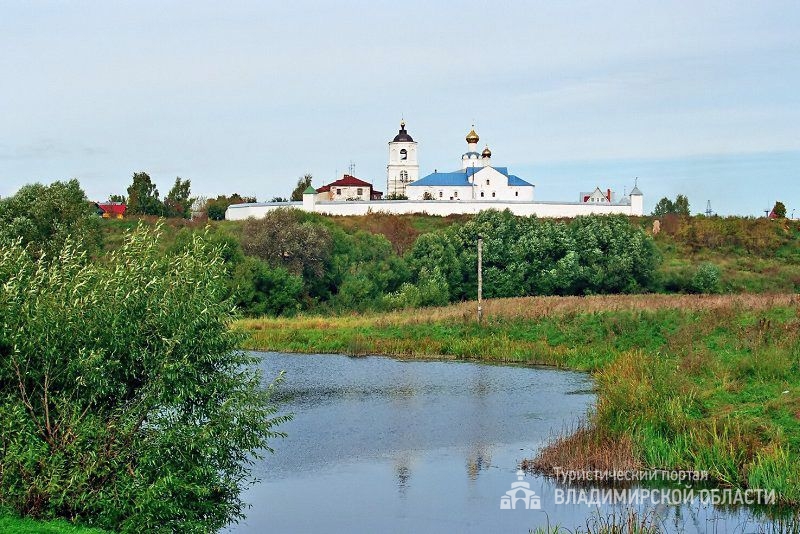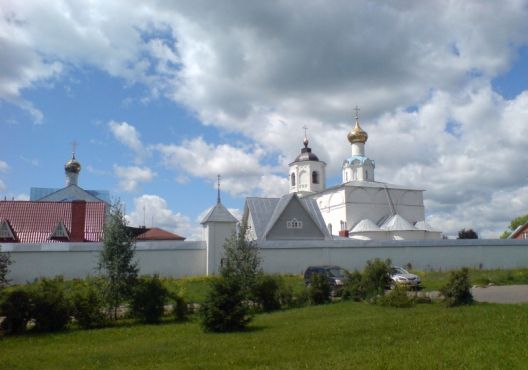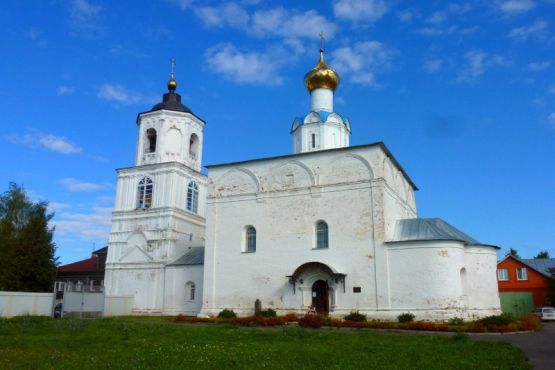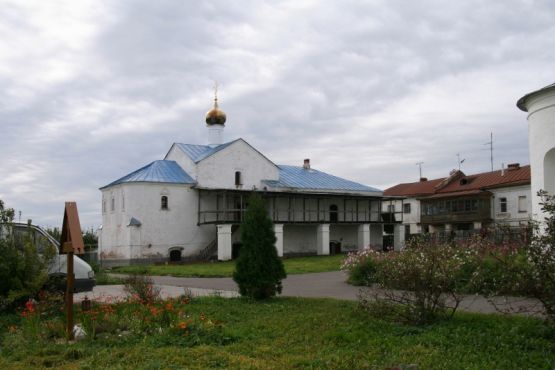Monastery of St. Basil (Vasilievsky)
- Address:
- Suzdal, Kalinin st., 1
- GPS:
- 56.41924643, 40.46202078
- Phones:
- +7 (49231) 2-18-00
One of the oldest in Suzdal, the Monastery of St. Basil (Vasilievsky) is located on the outskirts of the city, on the road leading from the Suzdal Kremlin to Kideksha. It was already known in the 13th century, and probably was an outpost of the city fortress.
The central structure of the monastery is the Cathedral of St. Basil, built in 1662-1669 on the site of the former wooden tented church. The external appearance of the temple was very simple and even severe, which was explained not so much by monastic asceticism, as by the lack of funds for construction, as noted in the records of the prior. The appearance of the cathedral reflected features of the original Suzdal architecture of the late 17th century, when traditional techniques of ancient architecture were revised. The cuboidal volume of the Cathedral of St. Basil is crowned with a cupola placed on an octahedral drum. Initially, the cathedral of a suburban monastery was conceived as a three-headed one (under the roof the bases of two more drums were preserved), probably in imitation of the ancient three-headed Nativity Cathedral of the Suzdal Kremlin. The upper part of the wide facades of the cathedral is adorned only with a ribbon of cornice and decorative arches instead of a zakomars. The most refined part of the decor is the entrance portals. A small refectory connects the cathedral with a three-tiered bell tower (an octahedron on a tetrahedron) of the 19th century, which is distinguished by a richer decor – pilasters and pilaster-strips all over the facade and carved cornices.
To the south of the cathedral is a two-storied refectory of the Church of Candlemas (the end of the 17th century), which eight- sloped roof resembles the church of the Archbishop’s Palace in the Suzdal Kremlin. On the first floor there were utility rooms (kitchen, bread room, etc.). On the second floor there is a one-pillar refectory and a church, three altar semicircles of which, barely outlined, rest on the walls of the first floor. This was quite a rare architectural technique of the time.
The Monastery of St. Basil was transferred to the rank of supernumerary in 1764. Until 1899, the monastery was attributed to the Deposition of the Robe Monastery, and until 1916 – to Saviour-Euthymius. Since 1916, the Monastery of St. Basil acted as a female. It was closed in 1923.
Cathedral of St. Basil, the refectory Church of Candlemas and the fence were restored in 1959-1961 under the guidance of architect V.V. Gasperovich.
Since 1995, the Monastery of St. Basil was re-established as a monastery for the Vladimir-Suzdal Diocese.
Vasilievsky cherry (Basil’s cherry)
In addition to its ancient history, the Monastery of St. Basil is also known for giving the name of the cherry tree sort – "Vasilievsky cherry" (Basil’s cherry). There are different versions of how the cherry fell on the Vladimir-Suzdal land. Some believe that the cherry was brought by Yury Dolgoruky to Suzdal from his residence in Kideksha, where the tree, in turn, was brought from Kiev. There is a version that the first cherry tree seedlings were brought by Andrey Bogolyubsky, who transferred from Kiev to Vladimir together with the Grand Duke's throne the tradition of breeding cherry orchards in the prince's court. According to the so-called "Greek" version, monks-travelers from Athos monastery brought the cherry to the Suzdal Monastery of St. Basil.
Whatever it was, but the monks of the Monastery of St. Basil showed incredible zeal when planting the cherry orchard and brought out a new variety of cherries, which they called "Vasilievsky" (Basil’s). The berries were very large in size, sweet in taste and aroma. They were not allowed to jam, but only enjoyed them. The berries of the Basil’s cherry were so tender that they were kept for no more than two days and difficult to bear transportation. For all these aristocratic qualities they were called "royal" and served high-ranking people on the table.
In the second half of the 16th century, this sort of cherry also began to be called "patriarchal", as it was cultivated in Vladimir in the Patriarchal Garden, which has survived to this day. Unfortunately, the Basil’s cherry itself – a complex and whimsical sort in care – was lost, as it is believed, in the middle of the 20th century.
 Tourism portal of the
Tourism portal of the


